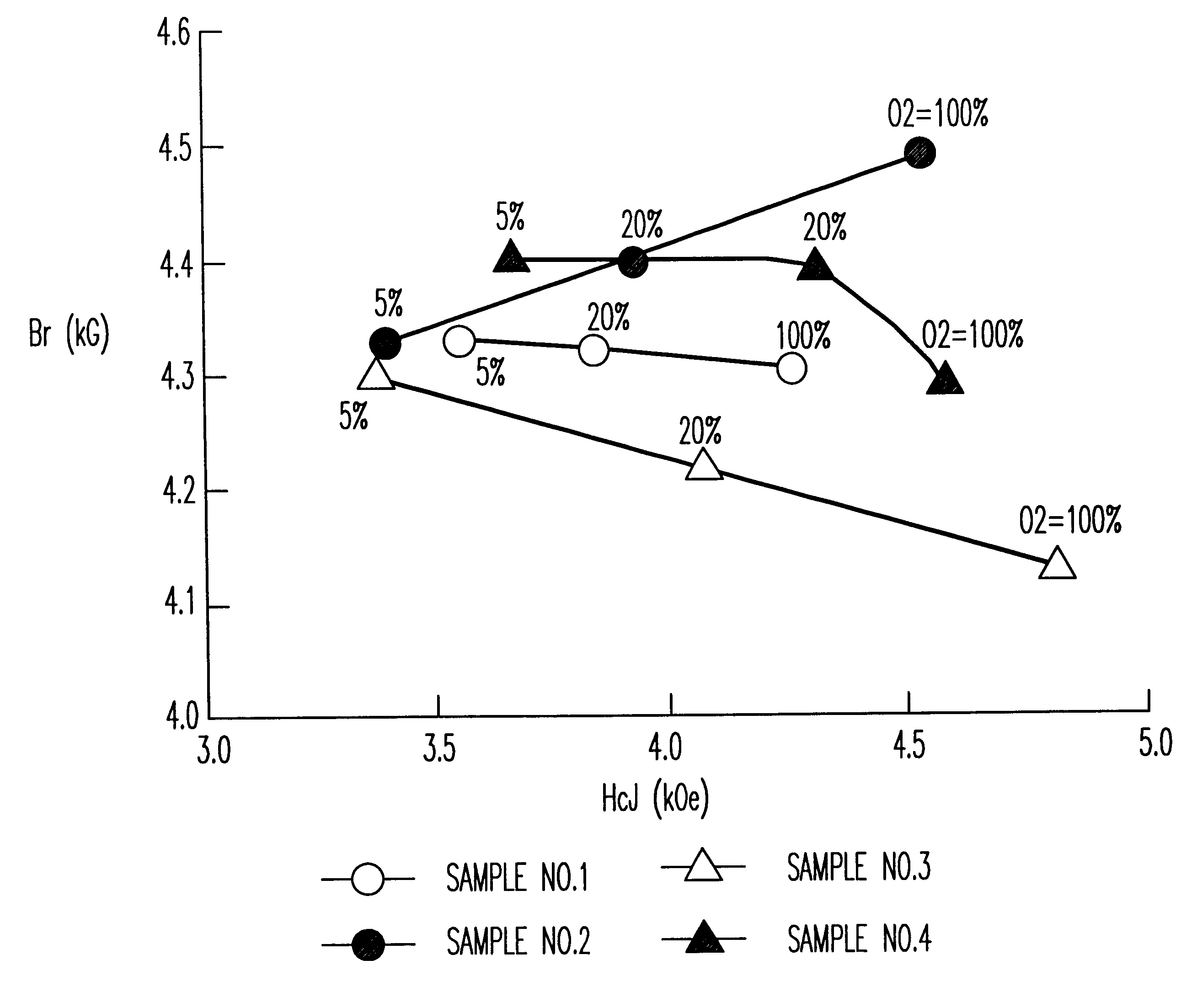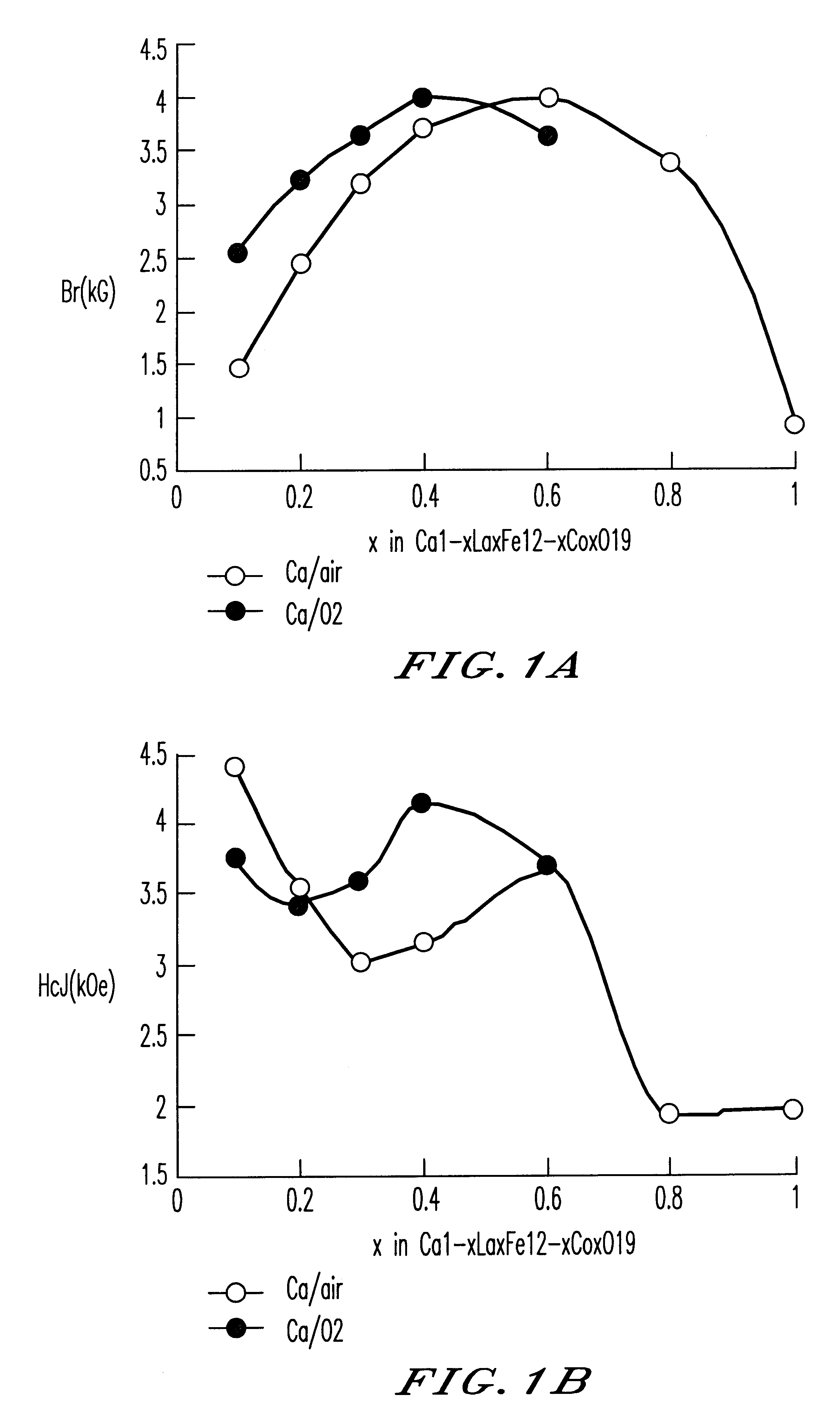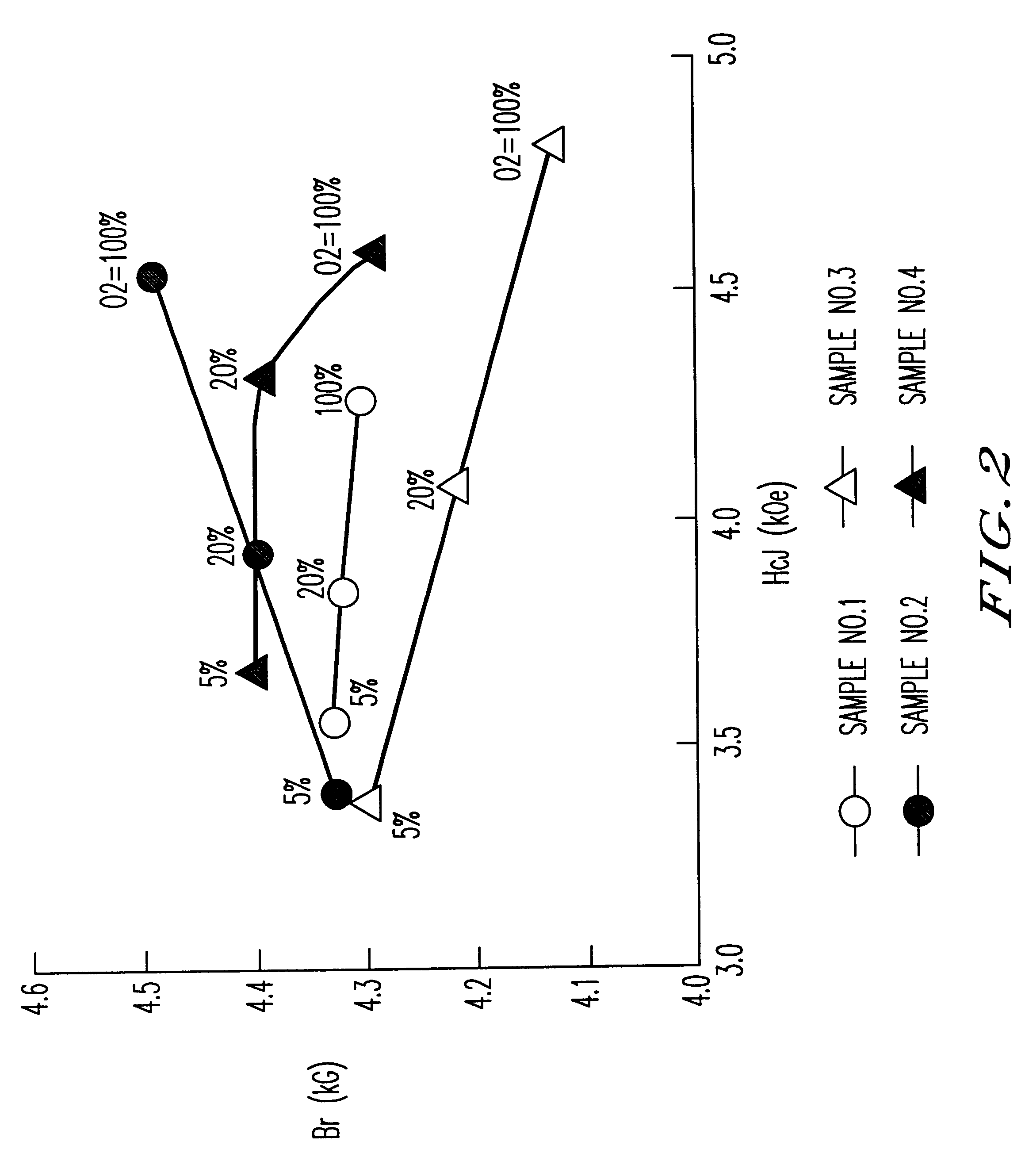Oxide magnetic material, ferrite particles, bonded magnet, sintered magnet, process for producing the same, and magnetic recording medium
a technology of oxide magnetic material and ferrite particles, which is applied in the direction of magnetic materials for record carriers, magnetic bodies, instruments, etc., can solve the problems of not considerably high, substantially impossible to provide a high br value of 4.5 kg or more, and difficult to obtain a br value of 4.4 kg or more and a hcj of 3.5 koe or more at the same time, and achieve excellent magnetic characteristics and high br value. , the effect of improving th
- Summary
- Abstract
- Description
- Claims
- Application Information
AI Technical Summary
Benefits of technology
Problems solved by technology
Method used
Image
Examples
example
Example 1
A Sintered Magnet Produced by Sintering a CaLaCo Ferrite (z=1) in the air or in Oxygen
Raw materials were weighed and mixed, so that a mixture had a composition with a Ca / La / Co / Fe ratio of Ca.sub.1-x1 La.sub.x1 Fe.sub.12-x1 Co.sub.x1, wherein x=y=0 to 1, and Z=1. The raw materials used were .alpha.-Fe.sub.2 O.sub.3 (for industrial use), La.sub.2 O.sub.3 (99.9%), CaCO.sub.3 and cobalt oxide (reagent, mixture of 85% of Co.sub.3 O.sub.4 and 15% of CoO). At this time, SiO.sub.2 (0.4% by weight) was simultaneously added. The weighed raw materials were mixed in a wet attritor, followed by drying. The resulting mixed powder was calcined with a batch furnace at 1,200.degree. C. for 3 hours in the air.
To the calcined powder, SiO.sub.2 (0.4% by weight), CaCO.sub.3 (1.25% by weight) and 1 ml of ethanol were added, and the mixture was pulverized with a dry vibration rod mill for 20 minutes. To the pulverized powder, 1.3% by weight of oleic acid was added, and the mixture was pulverized ...
example 2
A sintered magnet produced by Sintering a CaLaCo Ferrite with the z Value Deviated (z=0.85 or 0.95)
Samples of sintered bodies were produced in the same manner as in Example 1 except that the calcining temperature was 1200.degree. C. and the compositions and the addition conditions shown in Table 1 were employed. The magnetic characteristics of the sintered bodies with the sintering temperature of 1,220.degree. C. and in various sintering atmospheres are shown in FIG. 2. The magnetic characteristics of Sample No. 2 in Table 1 where the sintering temperature is 100% oxygen and the sintering temperature is varied from 1,200 to 1,240.degree. C. are shown in Table 2.
TABLE 1
It is clear from FIG. 2 that Sample No. 2 (z=0.85,1% by weight of CaCO.sub.3 was added after the calcination) sintered in oxygen exhibited superior characteristics (Br of 4.5 kG and HcJ of 4.5 kOe) equivalent to an SrLaCo series ferrite. Furthermore, it was clear from Table 2 that when the sintering atmosphere was oxyg...
example 3
The Calcined Material and the Pulverized Material Observed with an SEM
The calcined material of x=y=0.5 and z=0.85 calcined at 1,250.degree. C. and its pulverized material pulverized with a ball mill were observed with an SEM. The resulting photographs are shown in FIGS. 3 to 5. FIG. 3 is a photograph of the surface of the calcined material grains, FIG. 4 is an enlarged photograph of FIG. 3, and FIG. 5 is a photograph of the powder pulverized with a ball mill for 40 hours. It was clear from FIGS. 3 and 4 that the primary particles of the calcined material were plate-like crystals having an extremely large aspect ratio having a thickness of 1 .mu.m and a grain diameter of from 3 to 10 .mu.m. Furthermore, an extremely unique state was observed in that the particles were oriented within the region having a width of from 10 to 20 .mu.m. It was clear from FIG. 5 that the powder after pulverization with a ball mill had a size of about 1 .mu.m or less.
PUM
| Property | Measurement | Unit |
|---|---|---|
| pressure | aaaaa | aaaaa |
| partial pressure | aaaaa | aaaaa |
| crystal grain size | aaaaa | aaaaa |
Abstract
Description
Claims
Application Information
 Login to View More
Login to View More - R&D
- Intellectual Property
- Life Sciences
- Materials
- Tech Scout
- Unparalleled Data Quality
- Higher Quality Content
- 60% Fewer Hallucinations
Browse by: Latest US Patents, China's latest patents, Technical Efficacy Thesaurus, Application Domain, Technology Topic, Popular Technical Reports.
© 2025 PatSnap. All rights reserved.Legal|Privacy policy|Modern Slavery Act Transparency Statement|Sitemap|About US| Contact US: help@patsnap.com



